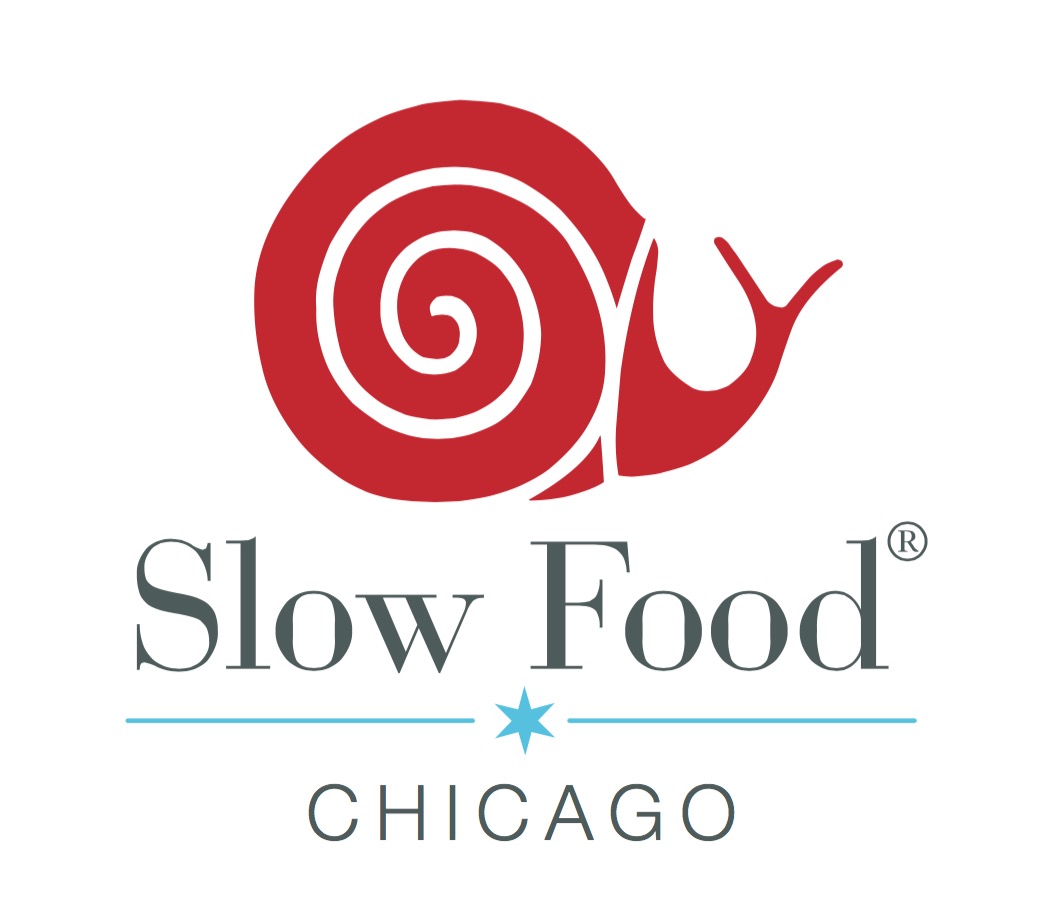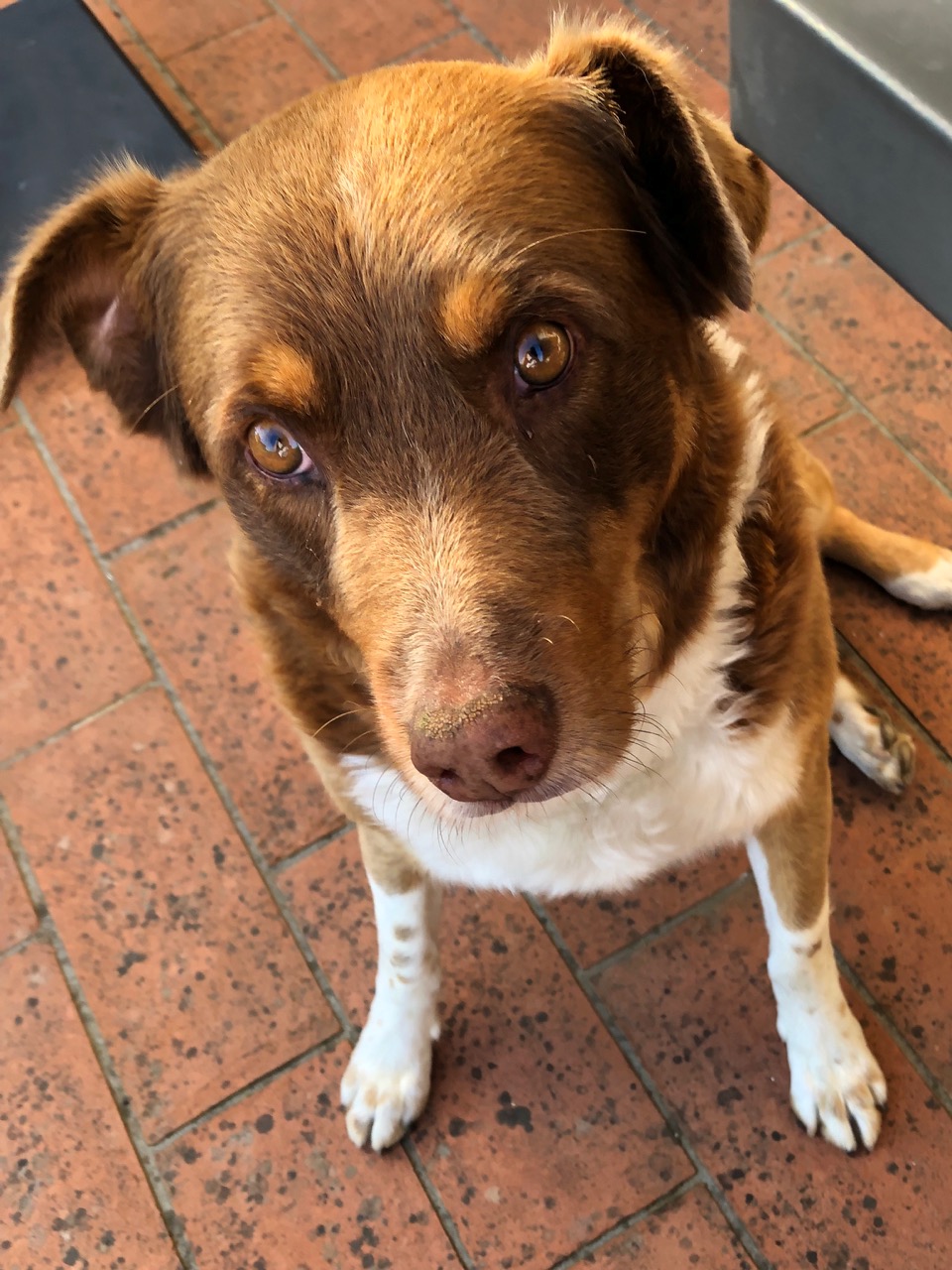A "Slow" Agro-tourism Experience - in Italia
/The following is a guest blog post by Slow Food Chicago community member Rebecca Margolis. You can get in touch with Rebecca about her experience on instagram or via email (margolis.rebecca@gmail.com).
The electric gate to agriturismo Podere Prasiano slowly swings open and Eddy the dog lopes down the lane to greet us. In the vista before us we see groves of cherry trees to the left, grapevines of various ages to our right, and ahead is a lovingly restored farmhouse set amidst a backdrop of rolling Emilian hills. We (my husband and I) are in Italy for two-weeks. After long days traipsing through hilly medieval towns in Tuscany, touring museums and cathedrals, and trying to fit in as many meals as possible per day in search of the best Bolognese, we have come here to slow down.
Eddy the dog. (Image provided by Rebecca Margolis.)
Eddy is the beloved pup of Massimo Cavani and Emanuela Grotti, owners of this family farm and guesthouse that have been in Massimo’s family since 1959. The farm is situated about an hour outside of the town of Modena in the Emilia-Romagna region of Italy. Massimo and Emanuela both grew up in the province and have made it their life’s work to share their special corner of the world and slow approach to living with others. Emilia-Romagna does not rely on tourism for income, as the region is rich in agriculture and industry. As visitors, there is not much to do here but relax and explore the countryside. Because we are foodies, we were drawn to this place because it is the home of Parmigiano Reggiano, Balsamic Vinegar and Prosciutto de Parma.
All meals served at the guesthouse are made from produce grown on-site in the organic garden and eggs gathered from the hen house. Under the eaves of the house, balsamic vinegar has been aging in a battery of casks for 34 years. Jams and preserves are made from the farm’s orchard flush with cherries, plums, apricots, peaches, figs raspberries, blackberries and currants. Recently, the Podere has started experimenting with growing its own olives for pressing olive oil. In 2004 Massimo, a trained sommelier, planted his first grape vines and began producing organic Merlot and Cabernet Sauvignon in 2010.
Podere Prasiano. (Image provided by Rebecca Margolis.)
In 2016, Podere Prasiano was tapped to participate in a project called the Festasio Project with the Universities of Bologna and Modena and the Region of Emilia-Romagna. Part of a larger project by the Centro Ricerche Produzioni Vegetali (Crop Production Research Center or CRPV) to protect biodiversity, the Festasio Project seeks to revive an ancient grape from the nearby village of Festá. Podere Prasiano was selected as a partner due to their commitment to organic farming and their perfect soil composition for a grape thought to originate in the area. They were also chosen for their willingness to invest time and money in cultivating a non-commercial crop, not to mention their proven commitment to creating artisan wines, and doing things slowly to achieve the best quality. Massimo, who was born in the village of Festá, was thrilled to participate.
In the 1970s and 80s, Italian grape growers began to shift their crops away from traditional grape varieties to more well known grapes that fetched higher sums from wine producers. The current countrywide effort to revive ancient grapes is in part a search for more special, artisanal opportunities in winemaking but its overall goal is to promote sustainable crop production by protecting biodiversity. The Festasio grape is important to study as it has very strong vines that are resistant to disease.
Festá is a tiny village that belongs to the municipality of Marano sul Panaro. Today, only nine people live in the village. As seems the norm in every tiny village in the Italian countryside, there is a medieval tower, a church and a delicious restaurant (despite the lack of nearby humans). The local wisdom is that in the year 890 the area was transformed into a vineyard and there are writings about the Festasio grape to support this. Much of the region has now been taken over by production of the Lambrusco grape due to a boom in popularity (particularly in the US) in the 1980s. Lambrusco is now the second most popular wine export from Italy after Prosecco. Older, traditional grapes have so fallen out of favor that by the time the Festasio project was initiated the grape had almost disappeared. Festasio was brought back to life after it was discovered by Claudio Plessi, a professor of agriculture and champion of indigenous varietals, in an ancient vineyard close to the village of Festá.
Festasio, a wine that almost vanished due to the popularity of Lambrusco grapes taking over the landscape. (Image provided by Rebecca Margolis.)
On a perfect summer night, Massimo takes me on a tour of his vineyard. His Festasio vines are in their second year and this is the first year he’ll harvest grapes and actually make wine from them. Grapes produced in the first few years of a vine’s life typically do not produce fruit suitable for making wine but this is all experimental. On a smaller scale, the CRPV has managed the growth of Festasio grapes in a test garden since 2001. The first wines were made in 2011. After Massimo and I return from our tour of the vineyard, he gathers my husband and our friends around a small café table on the terrace. Sitting there is a perfectly chilled bottle of Festasio wine from the 2011 harvest. This experimental bottle is one of a treasured few Massimo has for his own personal enjoyment.
Rebecca Margolis tasting the Festasio wine from 2011. (Image provided by the author.)
I am so honored to be experiencing this special wine that I want to remember every detail. The color is such a dark aubergine it is almost inky. Once swirled in the glass it releases aromas of blackberry and black current that match the intensity of its color. It strikes me that the wine is very low in acid, an important characteristic in providing structure to a wine. One purpose of creating these experimental wines is to determine what the best use of the grape will be. Perhaps as the vines mature the grapes will produce juice worthy of a single varietal wine. Perhaps Festasio will be deemed a grape most suitable for blending. It all remains to be seen as the vines continue to mature and the team continues to experiment with production methods.
As a Festá native, a passionate organic farmer and a wine lover, this project is a dream for Massimo. As we raise our second glasses for a toast he says, “this is my wine, the wine of my village”.















